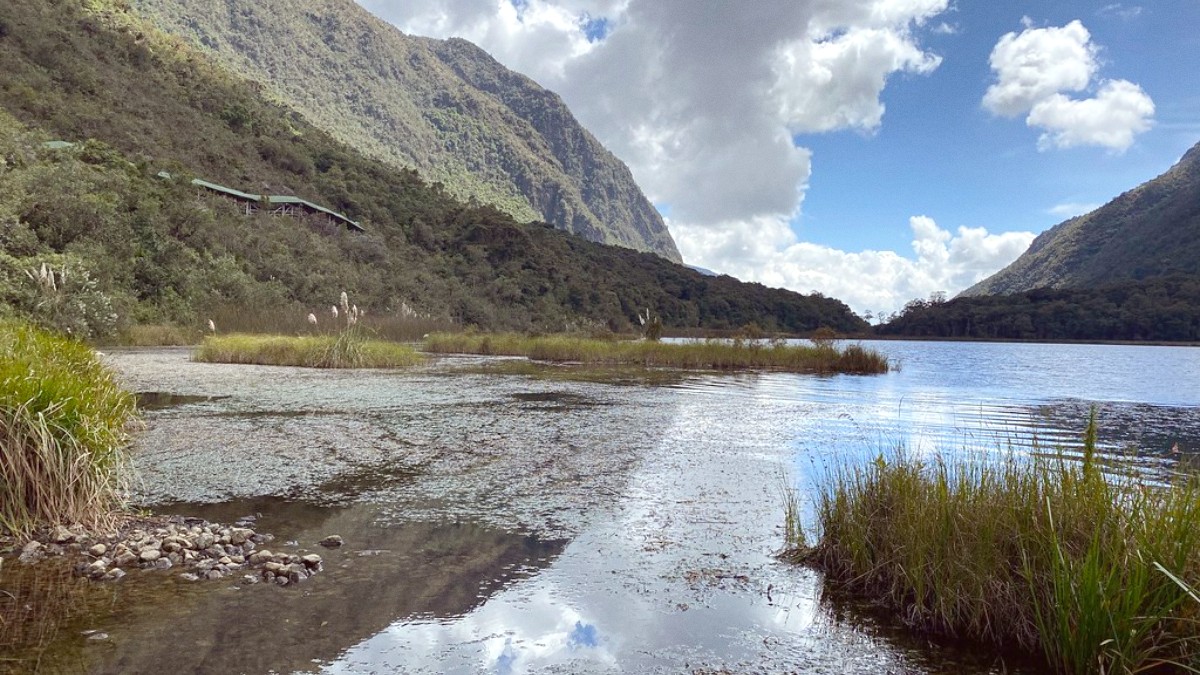
The Southern Highlands, Ecuador
Dry Season (June to October): Generally sunnier with less rainfall. Days typically reach into the high 60s Fahrenheit; nights cool into the 40s. Many consider this the most pleasant time for outdoor activities due to clearer skies.
Wet Season (November to May): Characterized by more frequent afternoon rainfall. Mornings often remain sunny and warm. Showers usually last an hour or two, then the sun returns. This season brings lush green landscapes.
Hiking in Cajas National Park: Best during the dry season (June-October) for clearer trails and better visibility. Rain gear is always a good idea, as weather shifts quickly even in the dry season.
Exploring the Historic Center: Pleasant year-round. The dry season suits outdoor café enjoyment, but walking through the city during a light shower brings a unique charm. Cultural festivals have specific dates; plan accordingly.
June - August, December - January
Generally dry, sunny weather; festive atmosphere during holidays; many events.
Higher prices for accommodation/flights; more crowds; greater competition for hotels/tours.
March - May, September - November
Fewer crowds; potentially lower prices; good balance of weather.
Increased chance of rain (afternoons); outdoor plans may need flexibility.
February, parts of November
Significant accommodation discounts; few tourists for authentic experiences.
Higher likelihood of rain; some smaller businesses may have reduced hours.
Most nationalities, including citizens of the United States, Canada, the European Union, Australia, and New Zealand, do not require a visa for stays of up to 90 days within a 1-year period. This permission is usually granted upon arrival. For stays exceeding 90 days, or for purposes other than tourism (like work, study, or retirement), apply for a visa in advance. Contact an Ecuadorian embassy or consulate in your home country for specific requirements and application forms.
No standard entry fees apply to Ecuador for most tourists. Upon arrival, travelers proceed through immigration. An officer stamps your passport with the entry date. Check that the immigration officer stamps your passport with the correct length of stay, like 90 days, to avoid issues later. Generally, no special permits are necessary for visiting Cuenca or Cajas National Park for tourists.
Passport valid for at least six months beyond your planned departure. Consider IVisa or VisaHQ for international visa services.
Immigration officers may request proof of an exit ticket from Ecuador (flight or bus ticket).
Evidence of sufficient funds to cover your stay can be requested (bank statements, major credit cards).
Not typically required for tourist entry for visa-exempt nationalities; having a few passport-sized photos is useful.
No specific health-related entry requirements as of early 2024, except for yellow fever certificate if arriving from risk countries.
Ecuador uses the United States Dollar (USD) as its official currency, simplifying money matters for many international visitors. ATMs are widely available, and credit cards find acceptance in larger establishments.
Ecuador's official currency is the United States Dollar (USD). ATMs find wide availability. Major banks include Banco Pichincha, Banco Guayaquil, and Produbanco. Credit cards (Visa, Mastercard) are accepted in larger hotels, restaurants, and shops. Cash is preferred for smaller establishments, markets, and street vendors. Bring small denominations of USD ($1, $5, $10, $20) as change for larger bills often presents difficulties, especially for small purchases.
Smart budgeting maximizes your travel funds in Cuenca. Focus on local experiences for better value.
These estimates cover typical daily expenses. Your actual costs may vary based on personal spending habits and chosen activities.
Being prepared for common concerns makes a difference. This section details health precautions and safety tips for a secure journey.
Cuenca's elevation may lead to mild symptoms. Acclimatize gradually, stay hydrated, and avoid alcohol. Consider preventative medication after consulting a doctor. Coca tea (mate de coca) is a traditional remedy.
A common issue. Practice good food and water hygiene. Wash hands frequently. Consume well-cooked food. Avoid tap water.
High altitude intensifies UV radiation. Use High-SPF sunscreen, wear a Wide-brimmed hat and Sunglasses. EltaMD UV Clear Sunscreen SPF 46 is a top option.
Access to Medical Services
Cuenca has several well-regarded hospitals and clinics, including Hospital Monte Sinai and Hospital Santa Inés. Many doctors speak English. Pharmacies (farmacias) are widely available and supply basic medications. Access emergency services (ambulances, police) by dialing 911.
Tap water in Cuenca is generally not safe for drinking. Use Bottled water for drinking and brushing teeth. A LifeStraw Go Water Filter Bottle limits plastic waste and purifies water on the go.
Eat at reputable establishments. Avoid raw vegetables washed in tap water, peeled fruit from street vendors, and undercooked meat. Ensure hot food is served hot.
Ensure MMR, Diphtheria-Tetanus-Pertussis, Varicella, Polio, and annual flu shots are up-to-date.
Generally recommended, especially for those venturing beyond main tourist areas.
Required only if arriving from a country with risk of yellow fever transmission. Not typically for travel solely to Cuenca.
Cuenca is generally one of Ecuador's safer cities. However, vigilance regarding petty crime is always wise.
Ecuador is in an active seismic zone; localized urban flooding can occur during heavy rains. Familiarize yourself with earthquake safety. Avoid night driving over long distances.
National Emergency Number: 911 (Police, Ambulance, Fire).
U.S. Embassy (Quito): +593-2-398-5000. U.S. Consular Agency (Guayaquil): +593-4-371-7000 (Cuenca jurisdiction).
Inform family/friends of your itinerary. Carry copies of important documents separately. Keep emergency contacts accessible.